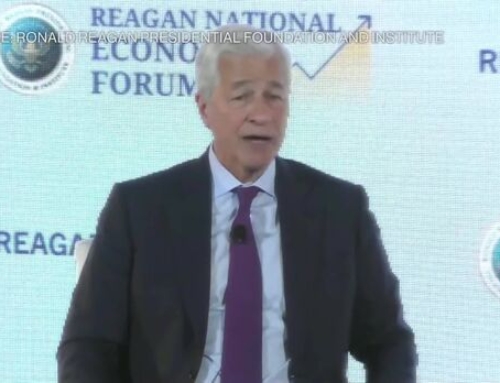Retirement planning used to be something people thought about in their 50s or 60s. But today, a growing number of younger professionals—those in their 30s and 40s—are taking a different approach. They’re not waiting until “later” to plan for retirement income. Instead, they’re leveraging long deferral periods by investing a significant portion (20–40%) of their retirement savings into Fixed Indexed Annuities (FIAs) and maximizing contributions to Roth 401(k)s.
This strategy is gaining momentum because it addresses two of the biggest risks retirees face:
- Longevity risk – living longer than expected and outliving savings.
- Tax risk – being forced to pay higher taxes in retirement due to rising government debt and future tax hikes.
By combining the power of FIAs with income bonuses and growth multipliers and the tax-free benefits of Roth accounts, younger professionals are setting themselves up for income security and peace of mind.
Why Younger Investors Are Choosing FIAs Early
Fixed Indexed Annuities are often misunderstood. Many think they’re only for retirees already drawing income. But when purchased earlier—especially in your 30s or 40s—FIAs can provide incredible compounding power because of their guaranteed growth multipliers and deferral benefits.
Unlike stocks, bonds, or mutual funds, FIAs are insurance products designed to provide income you cannot outlive. They allow you to participate in market-like gains without market downside risk, thanks to their link to indices like the BNP Paribas Global H Factor Index. When paired with a long deferral period, the guaranteed growth on the income benefit base makes them even more powerful.
Client Example #1: Julie H. – The Pharmacist Who Planned Ahead
Julie H., a successful pharmacist with a liquid net worth of $1.4 million, decided to reposition part of her assets into a safer, income-generating vehicle. On her 45th birthday, she invested $400,000 into the Nationwide Peak 10 Fixed Indexed Annuity.
Here’s how her FIA works for her:
- 25% Immediate Bonus → Her $400,000 instantly became $500,000 in her income benefits base.
- 8% Guaranteed Growth → For every year she defers withdrawals for the first 10 years, her income base grows by a guaranteed 8%.
- 310% Participation Rate → Her account value is tied to the BNP Paribas Global H Factor Index, with 310% participation every two years.
- 22-Year Deferral → She plans to turn on income at age 67.
The Results (Nationwide Illustration)
- Annual Income at 67: $165,711
- Account Value at 67: $2,485,660
- Income Yield: 31.75% of her original premium—almost 8x the traditional 4% withdrawal rule.
Julie’s strategy shows the incredible power of deferring income and using FIAs early. By locking in guarantees at age 45, she has secured a lifetime income stream nearly equivalent to her current salary—without market risk.
Client Example #2: Jennifer L. – Maximizing an Orphaned 401(k)
Jennifer L., a healthcare reimbursement leader, had a $351,000 401(k) left behind at a former employer. Instead of leaving it unmanaged, she rolled it into a Nationwide Peak 10 FIA. She and her husband have an overall liquid net worth $1,600,000+.
Here’s what her decision means:
- Initial Premium: $351,000 or 21.93% of their liquid net worth
- Estimated Annual Income at 67: $121,425
- Estimated Account Value at 67: $1,801,940
By making this move, Jennifer turned a dormant account into a retirement income powerhouse, securing more than $120,000 a year for life starting at 67—all from an initial investment of just $351,000.
How the Secure Act 1.0 and 2.0 Changed the Game
Many younger professionals wouldn’t even have the option to put annuities inside their retirement accounts if not for recent legislation:
- Secure Act 1.0 (2019): Opened the door for annuities to be offered in 401(k) plans by providing a fiduciary safe harbor for employers. This gave employees more access to lifetime income products.
- Secure Act 2.0 (2022): Expanded opportunities by increasing contribution limits, raising required minimum distribution (RMD) ages, and making Roth features more flexible.
Because of these changes, employees can now more easily allocate a portion of their IRA or 401(k) money into FIAs, taking advantage of institutional pricing and more robust product options.
Roth 401(k) vs. Traditional 401(k): Why Younger Professionals Prefer Roth
Younger workers today aren’t just focused on annuities—they’re also maxing out contributions to Roth 401(k)s. Here’s why:
- Traditional 401(k): Pre-tax contributions lower taxable income today, but all withdrawals in retirement are taxed as ordinary income.
- Roth 401(k): After-tax contributions grow tax-free, and withdrawals are 100% tax-free in retirement (as long as rules are followed).
The Key Advantage:
Unlike Roth IRAs, Roth 401(k)s have no income limits. This means high-income earners can still contribute, even if they’re phased out of Roth IRA eligibility. Plus, Roth 401(k)s can be rolled into Roth IRAs later to avoid RMDs altogether.
In other words, a Roth 401(k) is the ultimate tool to “delete the IRS” from your retirement income.
2025 Roth IRA Income Thresholds
For 2025, the IRS has set the following income limits for Roth IRA contributions:
- Single Filers:
- Full contribution if Modified Adjusted Gross Income (MAGI) is ≤ $161,000.
- Phase-out between $161,000–$176,000.
- No direct contributions above $176,000.
- Married Filing Jointly:
- Full contribution if MAGI is ≤ $240,000.
- Phase-out between $240,000–$260,000.
- No direct contributions above $260,000.
But Remember:
There are no income limits for contributing to a Roth 401(k) or converting traditional IRA money to a Roth IRA. Conversions are especially powerful when funded by taxable assets to pay the taxes—allowing 100% of the IRA money to move dollar-for-dollar into the Roth bucket.
The New Questions Younger Professionals Are Asking
Today’s younger investors are far more engaged with their retirement plans than previous generations. They’re asking sophisticated questions like:
- “What’s the expense ratio of my 401(k) funds?”
- “What’s the standard deviation of my portfolio?”
- “How can I capture market-like gains while minimizing downside risk?”
This curiosity is leading them toward lower-cost ETFs, Roth contributions, and FIAs—all of which align with the smart-safe investing trend.
Longevity Risk: Why Planning Income Early Is Critical
Americans are living longer than ever before. Many will spend as much time in retirement as they did in their working years. For example:
- Average Life Expectancy: Mid-80s for many Americans.
- 1 in 4 Americans: Will live into their 90s.
- 1 in 10: Will live past 95.
That’s why building a retirement income plan that lasts 30+ years is no longer optional—it’s essential. FIAs solve this by offering lifetime income guarantees, while Roth accounts provide tax-free withdrawals for decades.
Why Parents and Grandparents Should Share This Trend
The shift toward smart-safe investing isn’t just for younger professionals themselves. Parents and grandparents should be educating their children and grandchildren about the importance of:
- Allocating early to FIAs for long-term income benefits.
- Maxing out Roth 401(k) contributions to eliminate tax burdens later.
- Avoiding the pitfalls of high-fee 401(k) funds and unprotected market exposure.
By sharing these strategies, families can build generational wealth and create a financial legacy that lasts.
About Ford Stokes, RSSA®, MBA
Ford Stokes is the President and Founder of Active Wealth Management, headquartered in Alpharetta, GA with offices in Midtown Atlanta and Kennesaw. He is also the host of the Retirement Results Radio Show, the most listened-to weekend retirement show on AM 920 The Answer.
As a Registered Social Security Analyst® (RSSA) and author of multiple retirement planning books, including The Smart Retirement Plan and Annuity 360, Ford helps pre-retirees and retirees build tax-efficient, fee-efficient, and market-efficient portfolios that provide income for life.
Take Control of Your Retirement Future
If you’re a younger professional—or a parent or grandparent of one—now is the time to take action. The combination of FIAs with long deferral periods and Roth 401(k) contributions offers an unmatched opportunity to:
- Generate guaranteed lifetime income.
- Maximize market-like growth without market risk.
- Build a tax-free retirement.
- Protect against longevity risk.
At Active Wealth Management, we’ll provide you with:
- A Complete 401(k) Review (analyzing fees, risks, and opportunities).
- A Financial Plan to Age 95 (so you never outlive your money).
- An RSSA Roadmap to maximize Social Security.
- Access to our proven smart-safe investing strategies.
Final Thoughts
The retirement planning landscape has changed. Younger professionals are no longer relying solely on stock-heavy portfolios and the outdated 4% withdrawal rule. Instead, they’re adopting FIAs and Roth accounts to build income certainty and tax efficiency for decades to come.
Julie and Jennifer’s stories are proof of how powerful these strategies can be when implemented early. With Secure Act reforms, longer lifespans, and the availability of advanced annuity products, there’s never been a better time to rethink how retirement is planned.
Don’t wait until your 50s or 60s to act. Start now, while time and compounding are on your side.
👉 Schedule your complimentary 401(k) Review and Retirement Plan with Active Wealth Management today. Call 1-888-814-0304 to get started or visit activewealth.com/plan.
Investment advisory services offered through Brookstone Capital Management, LLC (BCM), a registered investment advisor. BCM and Active Wealth Management are independent of each other. Insurance products and services are not offered through BCM but are offered and sold through individually licensed and appointed agents.






